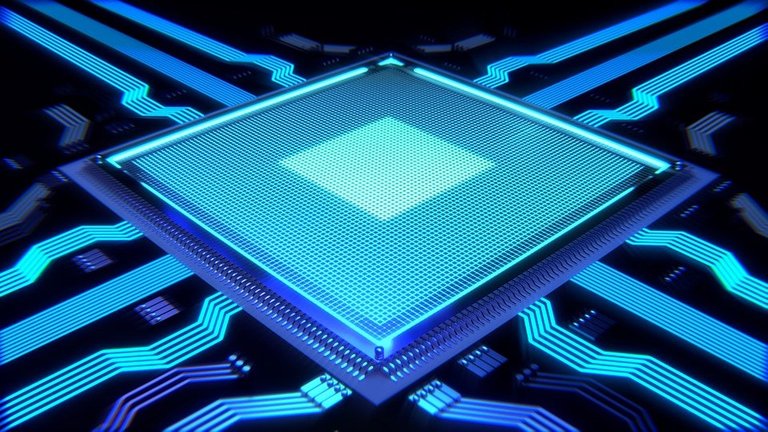
Most of us who are using x86/x64 hardware, have noticed that the virtual monopoly of Intel in the past 7 years has slowed down CPU evolution significantly. Intel had no reason to "hurry" anything, in terms of features / speed / miniaturization / performance per watt, as AMD -their main rival- had presented nothing worthwhile.
On top of that, AMD was still using an outdated 28/32nm lithography process since they were renting third-party fabrication plants, while Intel was quite ahead at their own 14nm fabrication plants.
The mobile evolution
But as the CPU competition was practically stagnant for so long, something dramatic happened in the mobile market: Companies like Samsung and Apple, in their own rivalry over the smartphone market, spent a lot of money in R&D, in order to improve their mobile, ARM-based, CPU architectures. And they started delivering big incremental steps of performance and performance efficiency in every product they were launching.
The result of this mobile competition was the production of chips like Apple's A10 and the Snapdragon 835 - while Apple's A11 is coming in the next iPhone. These are modern miracles compared to what we can buy in the x86 market, from a perf/watt perspective. A few years ago it would be inconceivable that a mobile CPU, consuming a couple of watts, can carry enough multi-core performance to beat older quad-cores and six-cores that have a 65-95W TDP envelope or have far better performance/watt than the latest laptop technologies by AMD and Intel.
ARMs already manufactured with 10nm fabrication technology
As the ARM chips go for mass 10nm implementations, and Intel doesn't have anything worthwhile to offer, it seems like it's just a matter of time to start replacing x86/x64 components in laptops, and then desktops, in order to get the best performance per watt possible.
Apple has already thrown warning shots that their future laptops might have their own chips instead of going for Intel. Some big PC makers have already announced their plans for Windows 10 ARM-based computers by the end of 2017. Once this trend gains momentum, the economies-of-scale for x86/x64 implementations will start going down even further compared to ARM (chips manufactured in the billions), ensuring that ARM will always be the most cost-effective option. And, at that point, the x86/x64 architecture will be running on fumes - with ever decreasing economies-of-scale, which will make it more expensive and less attractive for consumer products. The final death blow will be the switch of software manufacturers to the ARM platform.
Did Intel managed to "bury" the ex-dominant x86?
But how did we end up here? If someone told me 15-20 years ago that Intel would be marginalized in the CPU sector and that bankrupt companies like Apple would lead processor technologies, I would tell them that they don't know what they are talking about. I might have insulted them as totally clueless too. Yet here we are. It happened because Intel was too focused on what AMD was offering (or, better stated, not offering) and adjusting its own offers accordingly - losing the innovative spirit that is necessary in these type of high-tech industries. Their narrow focus to "milk" the consumer for profits, all the while offering non-innovative and power-hungry products, didn't help either.
I don't know how fast the x86/x64 architecture will die, but if Intel continues doing what it has been doing, by assessing the processor market based on AMD alone, then they are in for a huge shock with the ARM chip implementations. The rivalry between phone makers is pushing the envelope in processor technologies and fabrication improvements (7nm chips are scheduled for next year) far beyond what AMD has been doing (AMD just got into the 14nm market).
One thing is for sure: It will definitely be interesting to see how this market will evolve.
I think it will be even more interesting when the start putting things like beowulf clusters together with tiny processors, and computing takes a step outside the box of single monolithic architecture forever.
You mean for desktops, right? Because in the server market they've already been doing it for quite a while - it's the only way to scale upwards.
Yes, pretty much.
I guess the more accurate statement would be the thing we now call a computer will become a networked computer cluster. (multiple cores is already half way there)
TL;DR yep.
Really I Liked What You Do Every Day
And Always Join - Upvote - Comment and Reesteem
I wish the same
Thank You SweetHay @alexgr Nice Post Voted & Followed
Удачи !
Nice post
I followed you. Plz check my posts and upvote them and kindly follow me as i am new on steemit and i need your support as a beginner. Thanks in advance :)
Hi my freind. Im newcomer. help me. Please follow me
Alexgr, I wish to thank you personally for voting for me this past year. Steem was very fun in the beginning, when most people recognized each other. And now it is a little easier to get followers. The middle time had my best unrewarded work, however.
Actually you're one of my followers. Great article.
There was the 32 bit x86 computer motherboard architecture. Later, there was the 64 bit version. I was always expecting there to be a 128 bit version coming. I did not know about ARM until now. Will or does ARM have a 128 bit architecture or can we compare them to Intel, to AMD, to these things? I want to be able to compare new things with the older things that I've grown to love and understand.